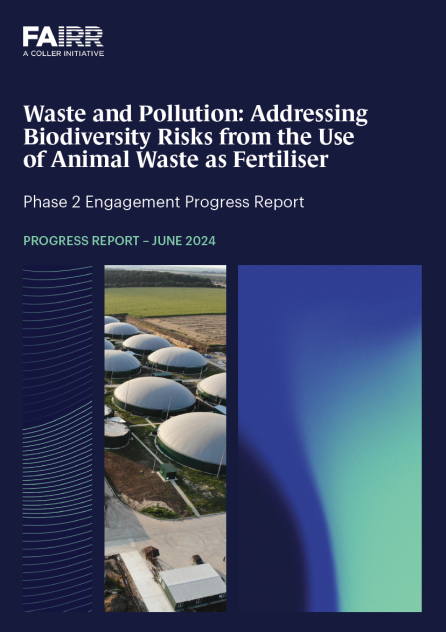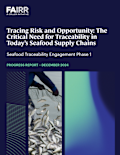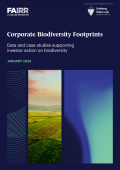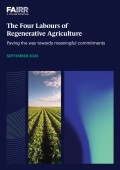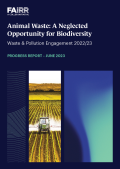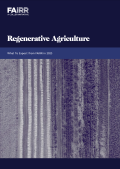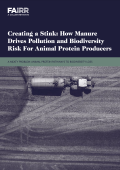Report Overview
Pollution has been identified as a key driver of biodiversity loss by the Intergovernmental Science-Policy Platform on Biodiversity and Ecosystem Services (IPBES), while also being tightly interlinked with climate change, and water scarcity and quality. A key driver of this has been shown to be the nutrient runoff from the use of fertilisers, including the excessive or inappropriate use of manure as fertiliser in areas of concentrated livestock production.
Beyond being a driver of biodiversity loss, the physical risks of polluted and eutrophic freshwater and marine ecosystems are often borne by government entities and marine industries such as aquaculture, although meat and dairy companies face various transition risks. Companies can face unexpected loss of revenue or increased costs and capital investment when local communities oppose farm expansion or, in some cases, litigate to gain compensation for water and air pollution. Yet, opportunities could continue to arise from better utilising the nutrients that are already in circulation and supporting meat and dairy producers in mitigating these risks.
This short report focuses on the progress made by companies in the second phase of this engagement, as well as areas where there remain significant gaps with leading practices. The latest analysis shows that while most of the companies are conducting water quality risk assessments, these are not thorough, as the majority of companies do not include animal and feed supply chains in the assessment. On the other hand, we see progress in risk mitigation, with all the companies implementing actions such as composting manure or producing biogas. Still, it is important to flag that, in most cases, these actions are not connected to overarching targets or strategies to reduce pollution risks.
The report also provides specific recent examples of material risks for companies. It also includes an analysis of the main company trends identified in this phase as well as key insights from the dialogues between companies and investors. Finally, the report includes a case study on the role of agrochemical companies in supporting nutrient circularity.
Report Highlights
The findings of this report offer FAIRR investor members:
Financial materiality examples of waste and pollution for animal protein producers and agrochemical companies
Discussion of the four pillars of FAIRR’s assessment and key takeaways from dialogues
Progress made by companies in each pillar
Best practice examples
Discussion of the role of agrochemical companies in nutrient circularity

